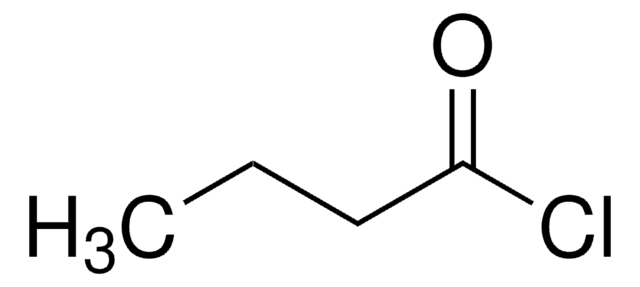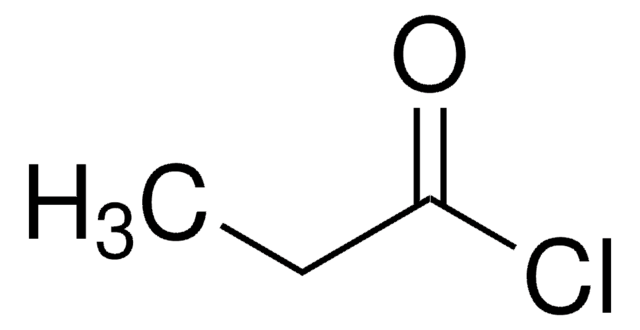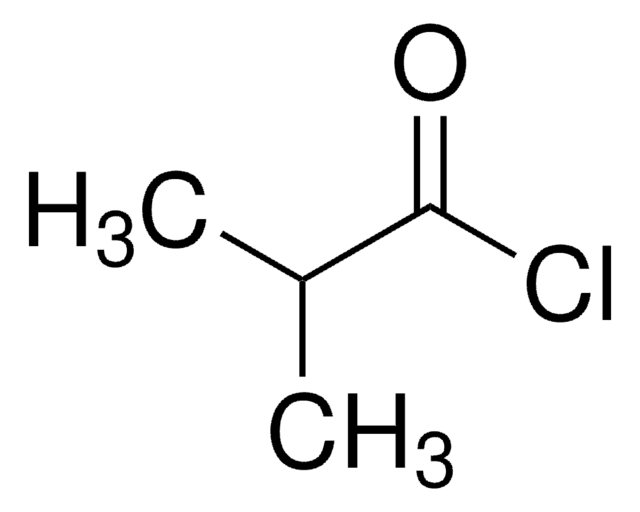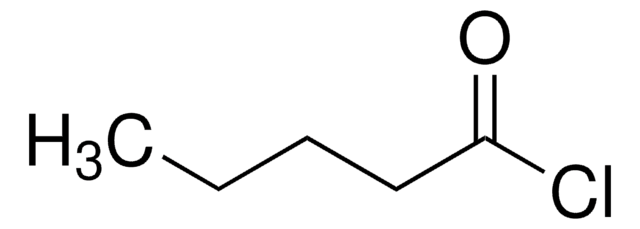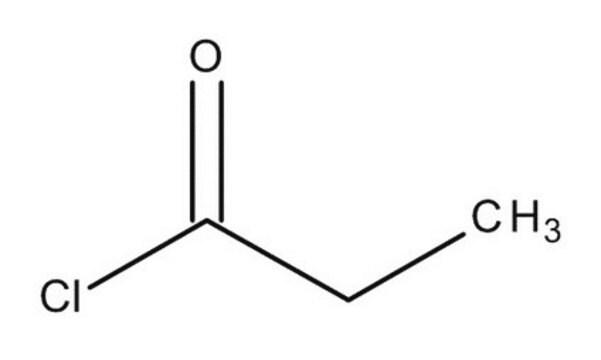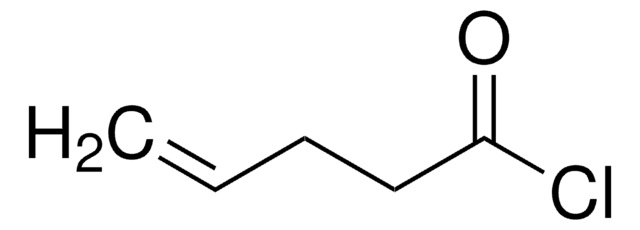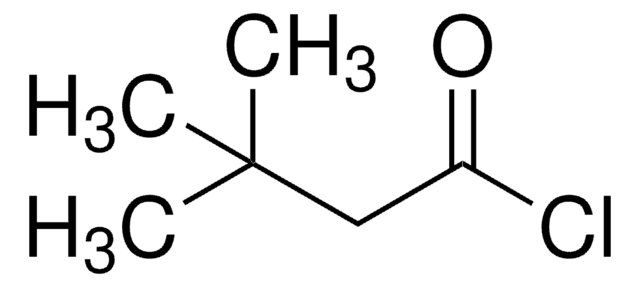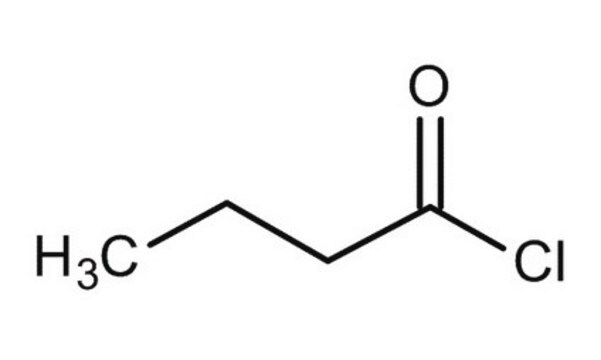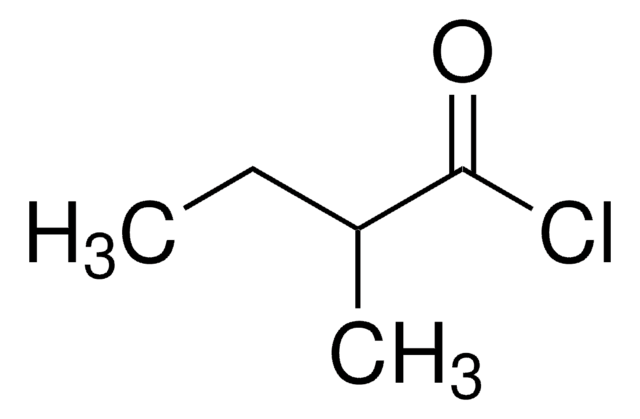157147
Valeroyl chloride
98%
동의어(들):
Pentanoic acid chloride, n-Butanecarbonyl chloride, n-Pentanoyl chloride, n-Valeryl chloride
로그인조직 및 계약 가격 보기
모든 사진(1)
About This Item
Linear Formula:
CH3(CH2)3COCl
CAS Number:
Molecular Weight:
120.58
Beilstein:
506293
EC Number:
MDL number:
UNSPSC 코드:
12352100
PubChem Substance ID:
NACRES:
NA.22
추천 제품
분석
98%
양식
liquid
refractive index
n20/D 1.42 (lit.)
bp
125-127 °C (lit.)
density
1.016 g/mL at 25 °C (lit.)
작용기
acyl chloride
SMILES string
CCCCC(Cl)=O
InChI
1S/C5H9ClO/c1-2-3-4-5(6)7/h2-4H2,1H3
InChI key
XGISHOFUAFNYQF-UHFFFAOYSA-N
유사한 제품을 찾으십니까? 방문 제품 비교 안내
애플리케이션
Valeroyl chloride was used in the enantioselective synthesis of propylisopropyl acetamide (PID), an amide analog of the major antiepileptic drug valproic acid. It was also used in the synthesis of (4R, 5S-4-methyl-3-(1-oxopentyl)-5-phenyl-oxazolidinone.
신호어
Danger
유해 및 위험 성명서
Hazard Classifications
Acute Tox. 3 Inhalation - Aquatic Chronic 3 - Eye Dam. 1 - Flam. Liq. 3 - Met. Corr. 1 - Skin Corr. 1A
Storage Class Code
3 - Flammable liquids
WGK
WGK 1
Flash Point (°F)
89.6 °F - closed cup
Flash Point (°C)
32 °C - closed cup
개인 보호 장비
Faceshields, Gloves, Goggles, type ABEK (EN14387) respirator filter
이미 열람한 고객
R S Hauck et al.
Pharmaceutical research, 9(7), 850-855 (1992-07-01)
The teratogenic activities of R(+)- and S(-)-2-n-propyl-4-pentynoic acid (R and S-4-yn-VPA), the enantiomers of the highly teratogenic valproic acid (VPA) analogues (+/-)-4-yn-VPA, were investigated in mice. The enantiomers were prepared via asymmetric synthesis, each in three steps employing the chiral
O Spiegelstein et al.
Chirality, 11(8), 645-650 (1999-09-01)
Propylisopropyl acetamide (PID), an amide analogue of the major antiepileptic drug valproic acid (VPA), possesses favorable anticonvulsant and CNS properties. PID contains one chiral carbon atom and therefore exists in two enantiomeric forms. The purpose of this work was to
Janclei P Coutinho et al.
Talanta, 134, 256-263 (2015-01-27)
In this work a multivariate statistical tool (Derringer and Suich optimization) was proposed for the separation of seventeen capsinoids (natural and synthetic) using the UHPLC-DAD chromatography. Capsinoids were analyzed at 280 nm. The variables optimized were the mobile phase (water
자사의 과학자팀은 생명 과학, 재료 과학, 화학 합성, 크로마토그래피, 분석 및 기타 많은 영역을 포함한 모든 과학 분야에 경험이 있습니다..
고객지원팀으로 연락바랍니다.